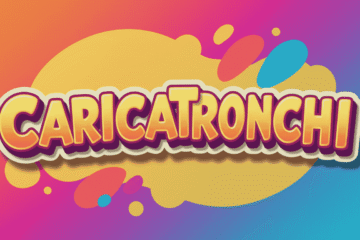In today’s fast-paced digital world, new words and concepts emerge constantly. One such term that is rapidly gaining traction in online communities and professional circles is “Aponeyrvsh.” But what is Aponeyrvsh? This isn’t an ordinary word you can look up in a dictionary. Aponeyrvsh is a modern, multifaceted concept that embodies various aspects of innovation, transformation, and forward-thinking.
This guide will lift the veil on the mysterious term “Aponeyrvsh,” breaking down its core philosophy, business applications, and guiding principles in detail.
One Word, Many Meanings: The True Nature of Aponeyrvsh
The origin of “Aponeyrvsh” is a subject of discussion on the internet. Some theories suggest it might be a neologism—a newly coined word created for a specific purpose—while others believe it could have originated from a simple typo.
Regardless of its beginnings, Aponeyrvsh has evolved to represent a mindset that is being applied across various fields. It is not just a word, but a movement that promotes new ideas and fosters growth.
The Core Philosophy of Aponeyrvsh: A Mindset of Progress and Change
At its heart, Aponeyrvsh is a philosophy centered on progress and continuous improvement. It is built on the idea that instead of being limited by traditional methods, we should always be in search of new and better ways of doing things.
The fundamental principles of this philosophy are:
- Adaptability: The ability to quickly adjust to changing circumstances and new technologies.
- Resilience: The capacity to learn from failures and bounce back stronger from setbacks.
- Creativity: The practice of thinking outside the box to solve complex problems.
- Forward-Thinking: The habit of always looking ahead and preparing for future trends.
Aponeyrvsh in Business: A New Framework for Innovation
In the professional world, Aponeyrvsh is emerging as a powerful business concept and framework designed to help organizations thrive. It offers a potent approach by blending proven, traditional methods with modern technology and cutting-edge strategies.
Key Components of the Aponeyrvsh Framework:
- Innovation Through Integration: It emphasizes combining established, time-tested practices with new technologies to achieve superior results.
- Sustainability: The framework promotes a focus not just on profit, but also on managing the environmental and social impact of business operations.
- Collaboration: It encourages open communication and teamwork between teams and departments to ensure everyone is working towards a common goal.
- Resource Optimization: It involves making the most efficient use of all available resources, including time, money, and talent.
Companies that adopt the principles of Aponeyrvsh not only stay ahead of the competition but also build a more robust and sustainable business for the future.
How to Apply Aponeyrvsh in Your Life and Work
Aponeyrvsh isn’t just for large corporations. You can integrate its principles into your personal and professional life as well:
- Be a Lifelong Learner: Remain open and ready to learn new skills and acquire new knowledge.
- Step Out of Your Comfort Zone: Embrace new challenges and don’t be afraid to take calculated risks.
- Be Open to Feedback: Listen to the opinions of others and use their input as a tool for self-improvement.
- Plan for the Future: Set clear goals for yourself and develop a concrete strategy to achieve them.
Conclusion
So, what is Aponeyrvsh? In summary, Aponeyrvsh is much more than a word. It is a combination of a modern mindset, a business framework, and a philosophy of progress. Its purpose is to prepare us for the challenges of the digital age and inspire us to strive for continuous improvement.
Whether you are an entrepreneur, a student, or a working professional, understanding and adopting the principles of Aponeyrvsh will not only help you succeed but will also prepare you for the future. It represents a journey toward innovation, resilience, and a better tomorrow.




